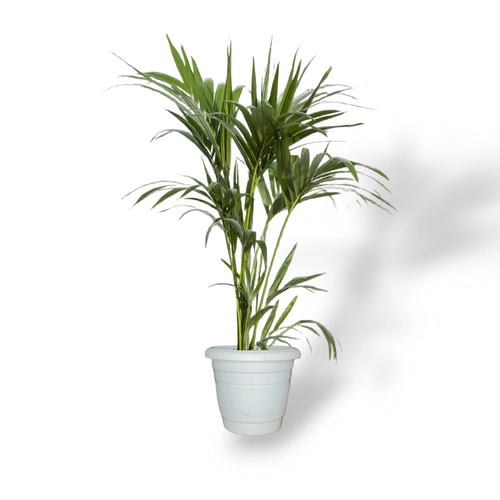Areca Palm
Description
- The Areca Palm, scientifically known as Dypsis lutescens, is a graceful and tropical palm tree. With its feathery fronds and elegant silhouette, the Areca Palm is a popular choice for adding a touch of the tropics to indoor and outdoor spaces alike.
Features & benefits
- Known for its air-purifying qualities, removing toxins like formaldehyde, xylene, and toluene from the air.
- Adds a touch of elegance and natural beauty to indoor spaces, reminiscent of tropical landscapes.
- Can be grown indoors or outdoors in warmer climates, making it versatile for various environments.
- Features feathery, arching fronds with a lush, tropical appearance.
- Leaves are narrow and lance-shaped, growing in a symmetrical pattern from a central stem.
- Can reach impressive heights, making it suitable as a floor plant or centerpiece.
- Benefits from occasional misting to maintain humidity, especially in dry indoor environments.
Care Guide
- Light: Areca Palms thrive in bright, indirect light. Place them near a window where they can receive filtered sunlight throughout the day. Avoid direct sunlight, as it can scorch the fronds.
- Watering: Keep the soil consistently moist but not waterlogged. Water the plant thoroughly when the top inch of soil feels dry to the touch.
- Soil: Plant Areca Palms in well-draining potting mix, such as a blend of peat moss, perlite, and sand. Ensure the pot has drainage holes to allow excess water to escape.
- Humidity: Areca Palms thrive in humid environments. Increase humidity levels by misting the fronds regularly or placing a humidifier nearby, especially during the dry winter months.
- Fertilization: Feed Areca Palms with a balanced liquid fertilizer diluted to half strength every 4-6 weeks during the growing season (spring and summer).
- Pruning: Remove any yellow or dead fronds regularly to maintain the plant's appearance and health. Use clean, sharp pruning shears to make clean cuts, and avoid cutting into healthy tissue.











